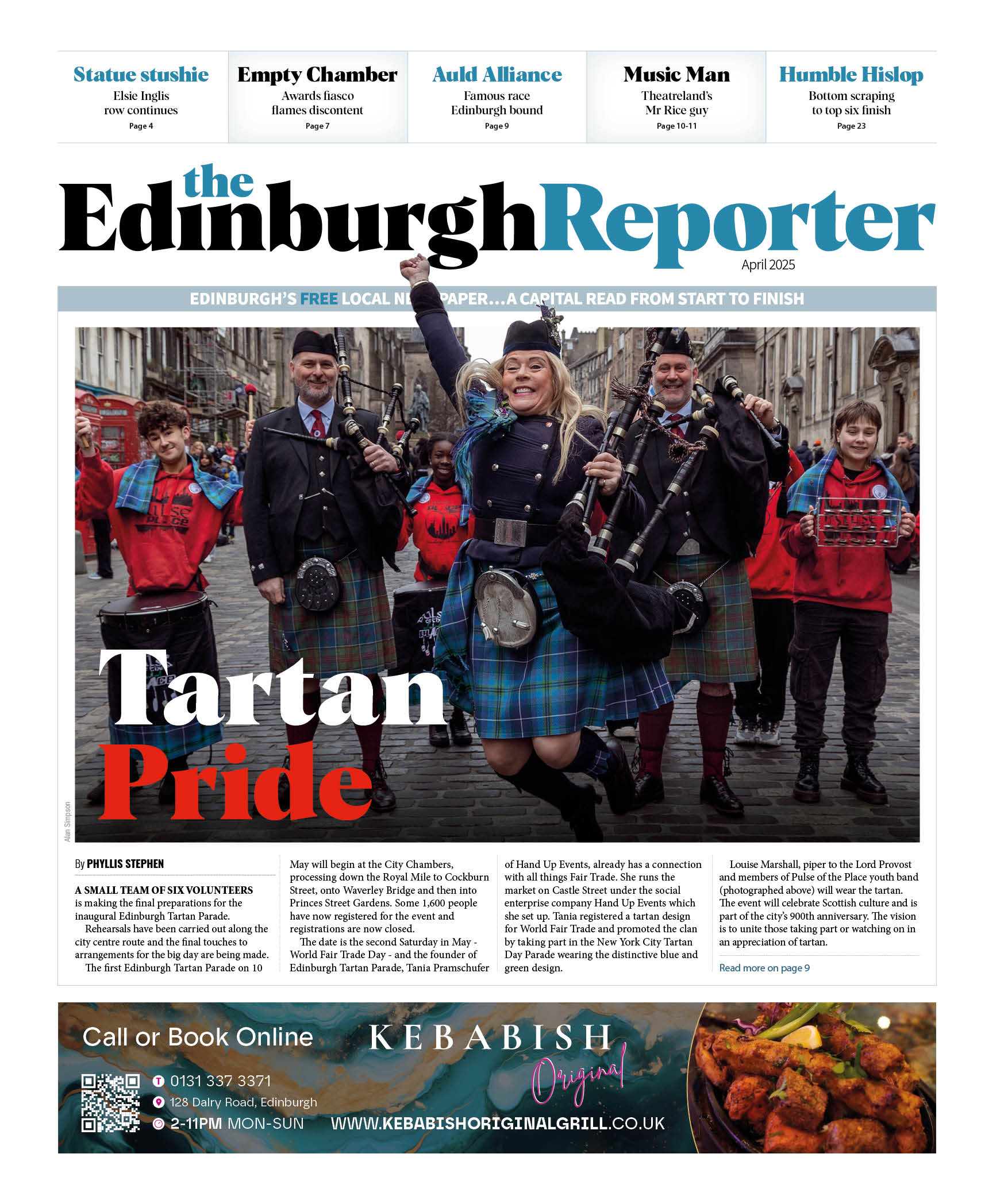The charity, Statue for Elsie Inglis, SC051749, has applied for planning permission for a monument to be erected on the Royal Mile to commemorate Dr Elsie Inglis.
This will, if approved, be placed opposite two plaques which are high on a wall next to 219 High Street.
The site is appropriate as it is where Dr Inglis set up her hospice where she pioneered maternal care.
But the design for the new statue is causing a great deal of comment. So far there have been 262 comments, 158 of which are supportive.

Natasha Phoenix is a sculptor who was both annoyed and disappointed when the previous call to artists by the trustees was abandoned when they secure the services of the King’s Sculptor in Ordinary, Professor Alexander Stoddart.

The design statement written by Jewitt & Wilkie Architects states some of the reasoning behind the design – in particular the desire for a plinth or pedestal.
The statement reads: “The vision for the piece is to erect a lasting testimonial to a deserving
subject. The proposed location on the Royal Mile is adjacent to the
women’s hospital pioneered by Dr Elsie Inglis and is a prestigious
location for an important historical figure, sitting in relation to other
notable monuments and respecting the composition of the landmark
street. The scale of the monument is determined by the nature of the
subject on the one hand, and the durability of the exposed object in a
public space on the other. Deciding on these matters is not an arbitrary,
conceptual exercise, but rather a process involving long standing
experience and knowledge of the field. Naturally, the need for high visual
impact requires an increase in scale from the banality of life-size to
something able to hold its own in the teaming environment of the Royal
Mile. The pedestal is part and parcel of the process of securing notice
for the piece. To omit a pedestal would be to demote the subject in the
context of the other Royal Mile monuments.”
Objections
On Monday The Edinburgh Reporter met Nicholas Oddy who is critical of the design. He is head of design history and theory at Glasgow School of Art.He said: “If it was going to be Alexander Stoddart and his normal ones, it would be in the neoclassical form and Inglis, would look like a great thinker, a great physician, a great a war hero. She’d be heroic and not looking like somebody waiting for a bus, which is what it looks like.”

Cllr Margaret Graham told us she thinks it is an “”old design”. She said: “The design is very old looking in nature, and I don’t think it is going to enhance or embrace the public space. And I think we’re now at a time where public art should be evoking a lot of discussion, and it should merit that.” Cllr Graham mentioned the statue of Mary Barbour which depicts the subject “in full flow with other people in the statue”.
Natasha Ingram-Phoenix said she would portray Dr Inglis differently. She said: “I would like to have represented Elsie with a new mother with a baby to her breast under a shawl. And I would like to have represented Edinburgh as well as a city around that so I sort of have a design in mind, but I’d like to have got community feedback before putting that design out.”
Ms Ingram-Phoenix also said if she was chosen to produce the sculpture then it would have to be by a professional body.
Dr Inglis attended school in Edinburgh and then studied at the medical school in Edinburgh which was opened by Dr Sophia Jex-Blake. By 1892 she had qualifications from the Royal Colleges of Physicians and Surgeons in Edinburgh and the Faculty of Physicians and Surgeons in Glasgow.
She returned to Edinburgh in 1894 when she set up the Hospice for poor women to offer maternity care in George Square. Newer premises at 219 High Street were better resourced but this was only a stepping stone to the Elsie Inglis Memorial Maternity Hospital where so many people still living in Edinburgh were born.

Founding Editor of The Edinburgh Reporter.
Edinburgh-born multimedia journalist and iPhoneographer.












